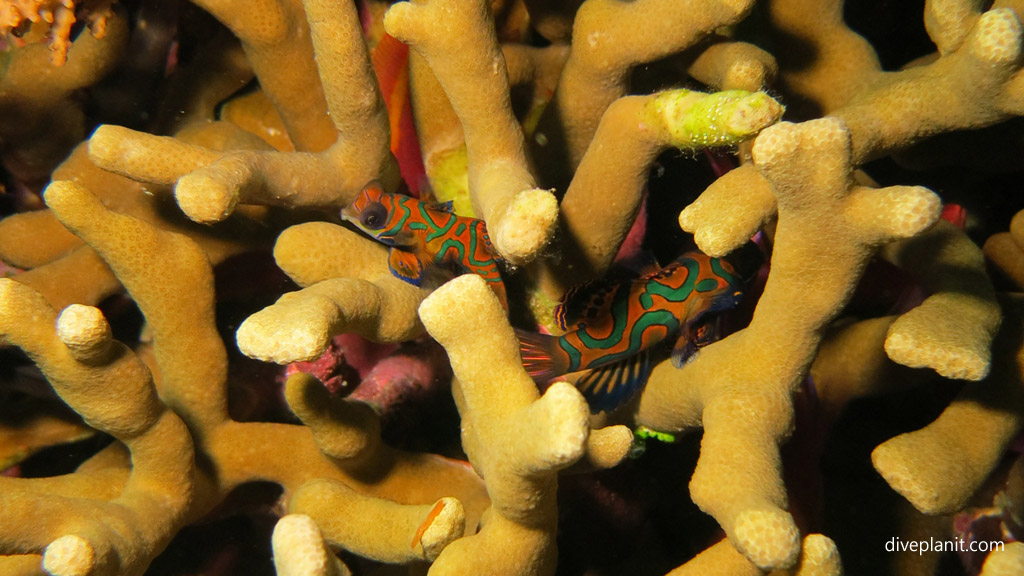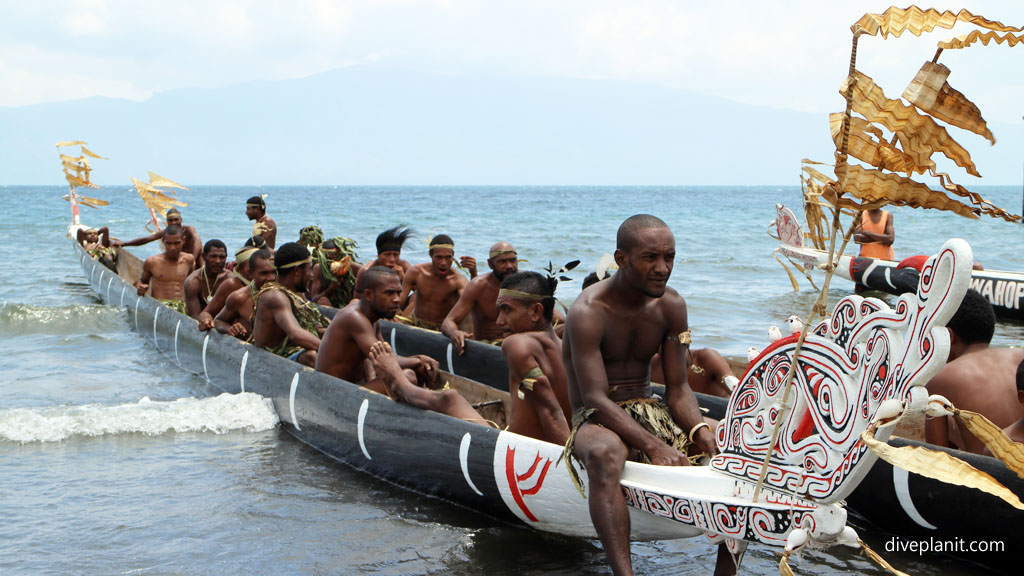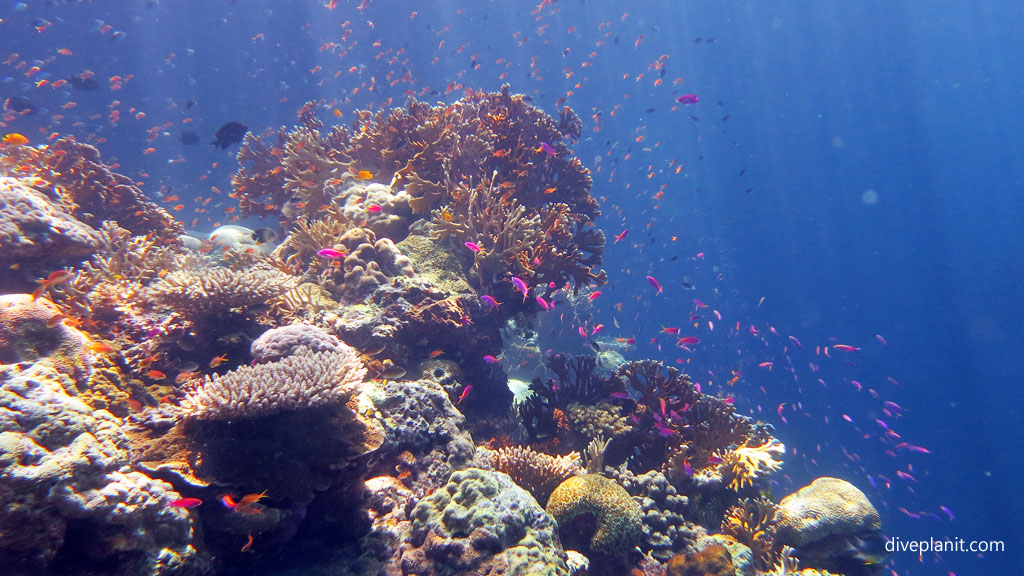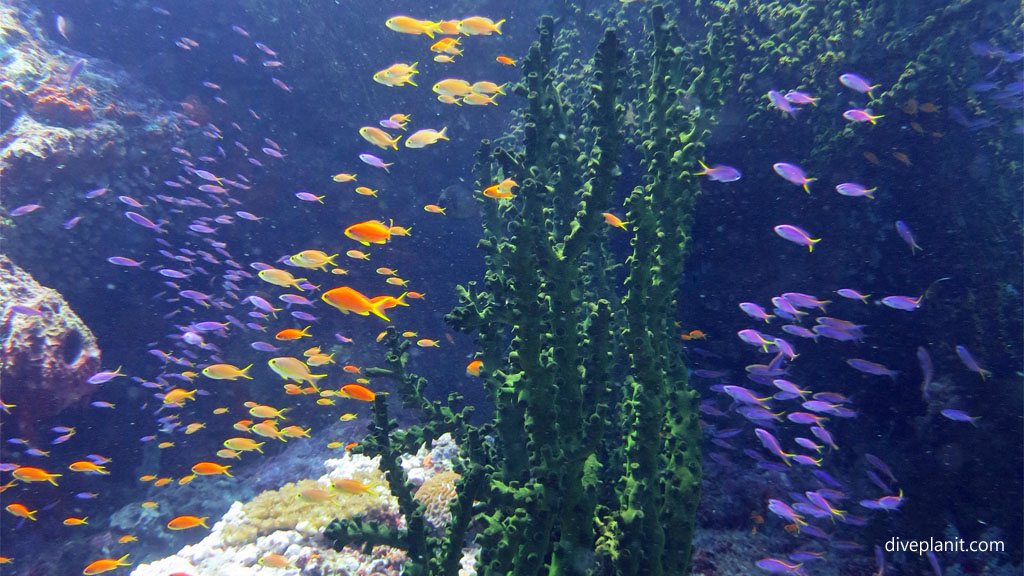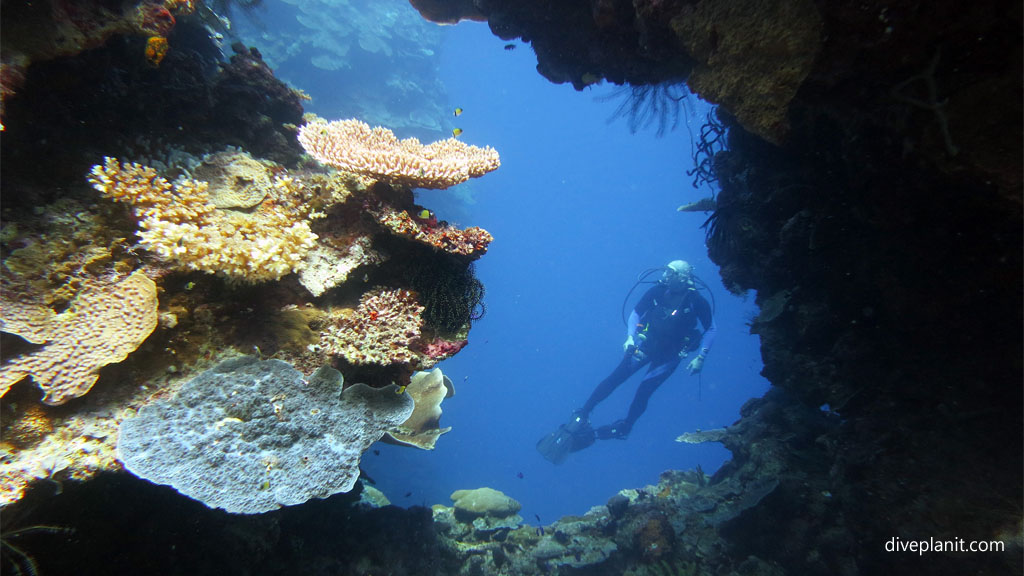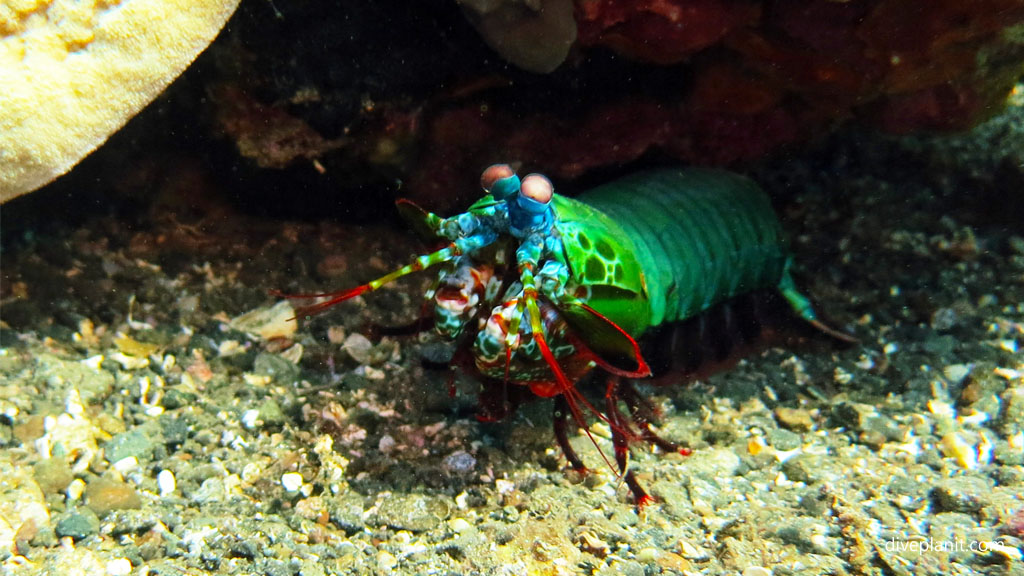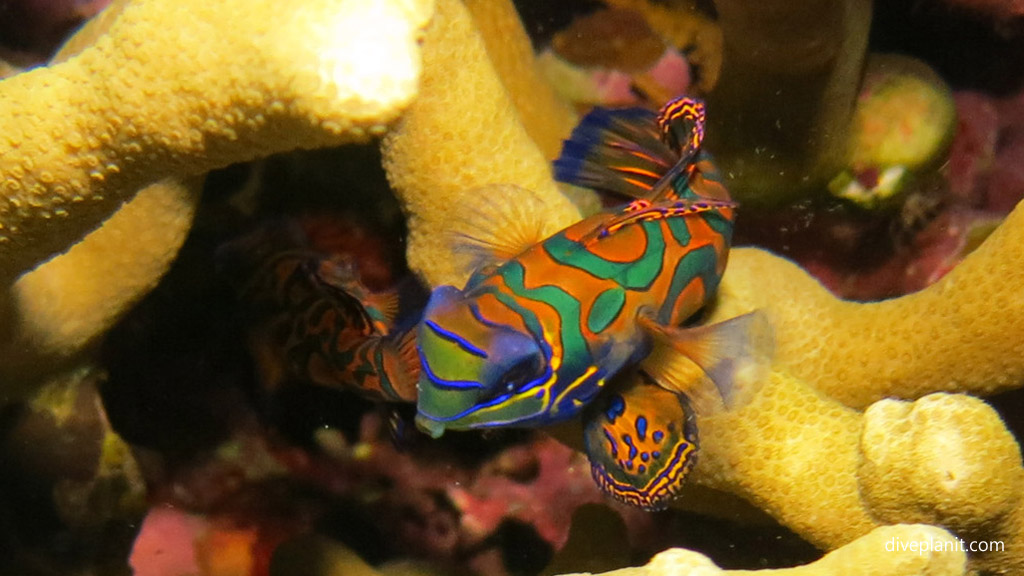As the sun is setting, I sit down on the jetty at Tawali Dive Resort, strap on my fins, snap on my mask and jump into the warm water.
Just a few metres from the jetty the reef drops off and I lower myself down into the coral gardens and hover around a big coral formation where my guide tells me I’ll find what I’m looking for: Mandarin Fish.
And there they are. Darting in and out of the fire coral, almost too fast to photograph and much smaller than I expected. They are incredibly pretty, blue, green and orange stripes, with fluttering, frilly little fins, and big inquisitive eyes.
They flirt with each other, and tease me as they flit in and out of the coral, staying only a moment before they disappear again. It’s tricky to hover here by the coral to try and photograph them, with the incoming tide pushing me over the reef, and these beautiful little fish seem to be mocking me with their easy manoeuvres through the coral branches.
It’s definitely one of the high points of my many diving experiences, a great way to finish my first day of diving in Papua New Guinea. And what a day it’s been.
I’m here at Tawali Dive Resort on a short side-trip, having spent the previous days at the National Kenu & Kundu Festival in Alotau, Milne Bay Province, on the eastern tip of Papua New Guinea. The kenu (canoe) and kundu drums are a significant part of the lives of the people of Milne Bay, and this festival was first introduced back in 2003 as a way to bring sometimes-disparate local communities together.
After a day watching these brightly painted war canoes, and even more brightly painted groups of dancers, we head northwest to Tawali, arriving for our transfer across the lagoon as the sunsets.
Up bright and early on my first day at the resort, I’m eager to make the most of my short stay and spend as much time underwater as possible. I’m excited to finally be here, having heard so much about the spectacular diving.
We arrived under cover of darkness, so it’s only in the morning light that I first see how beautiful this place really is. Looking out from my balcony, which overhangs a semi-circular bay of turquoise water, I can see coral gardens almost directly underneath me. I literally squeal with delight. I can’t wait to get in there.
The maximum number of dives we are able to fit into one day is four, and I’ve put my hand up for all of them, which means I’ll pretty much be wet for the entire day and half the evening, but I don’t care.
I’m diving with a couple from Seattle, Kathy and Larry, who I get to know over breakfast, as we compare dive stories. They rave about the cold-water diving back home in Seattle, the friendly eels that wrap themselves around your neck (perhaps in an attempt to keep warm) and I boast about the seahorses and weedy sea dragons of Sydney Harbour.
This is a long way from Sydney and Seattle. Our first dive is at Barracuda Point, about eight-minute boat ride away. Our dive guide Albert describes a sloping shelf, and what critters we’re likely to see. He doesn’t mention how many.
I jump in and glide down into the coral gardens, through enormous schools of brightly coloured reef fish.
It’s an incredible sight. Huge schools of pink, purple and orange anthias, yellow damsels and black surgeons surround me. Darting in and out of the coral gardens I see the odd titan triggerfish, parrotfish, emperor angels, coral groupers, trumpet fish and unicorn fish.
We make our way slowly around the reef wall, not wanting to miss anything, as I madly snap photos of everything I see.
It’s a kaleidoscope of colour.
A kaleidoscope filled with huge schools of reef fish, and a backdrop of colourful soft and hard corals. I emerge grinning from ear to ear, impatient to get back in the water for our next dive.
We plunge into the water next at Deacon’s Reef a couple of minutes along the coast. The shelf of this reef sits underneath the jungle canopy and there is an underwater jungle of gorgonian fans less than a metre away from the shore.
The reef wall drops off to a depth of about 30m, and it’s covered in sea fans, sea stars and soft corals. More large schools of anthias and damsels, this time joined by bright blue and yellow fusiliers as the wall opens up into coral gardens with large mounds of cabbage corals and a pretty little swim-through.
In the nooks and crannies our guide manages to find a few tiny wonders for us including a well-camouflaged leaf scorpion fish, a colourful porcelain crab and a pygmy sea horse that’s so tiny it might fit on a pin-head.
We have lunch on nearby Lawadi Beach, which turns out to be our third dive site, a muck dive. This is Kathy and Larry’s favourite kind of diving so they’re pretty excited, me not so much – I’m always blown away by the beauty of a colourful reef. But this dive changes my mind about muck diving.
The critters we find in the dark volcanic sand that slopes down from the beach are quite incredible. Within moments Kathy has found a pair of bright green, blue and orange mantis shrimp hiding under a rock.
Then every metre or so we find more; nudibranchs of all size, shape and colour, pipe fish and anemones with tiny anemone fish and porcelain crabs hiding amongst their tentacles.
On these first three dives I’ve seen such an amazing quantity and diversity of marine creatures it restores my faith in the survival of the world’s coral reefs, and strengthens my resolve to campaign for their conservation.
But the best is yet to come. I meet Kathy and Larry on the jetty and our guide Albert guides us through the House Reef to a large round formation of coral where the mandarin fish live.
Mandarin fish come out to play just as the sun is setting, so you have to time your dive carefully. I’ve tried and failed to find these elusive creatures a few times before, in Palau and the Philippines, but each time been weathered off or delayed or distracted in some way.
They’re smaller than I imagined, and by far the prettiest little fish I’ve ever seen. This is the highlight of the day’s diving. I could hover here for hours watching them.
Eventually we’re dragged away to follow the reef wall to the resort’s beach, searching out gorgeous little creatures of the night, along the way; nudibranchs, pygmy seahorses and horse shoe crabs, before finally emerging (a little late) for dinner.
In one day I’ve dived at four very different dive sites, all within a 10-minute boat ride. It’s been a day very well spent. I’m already planning my return trip.
More information on Tawali Dive Resort: tawali.com

